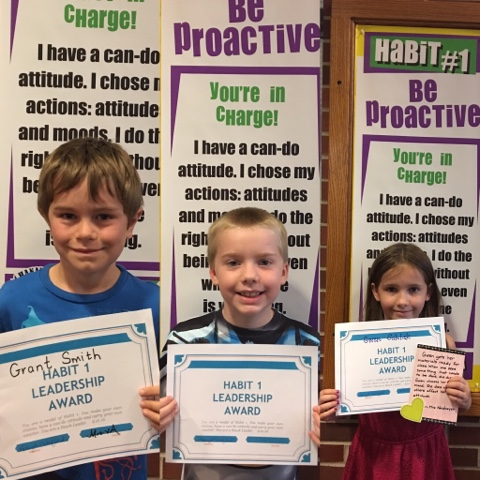Tuesday, September 27, 2016
Habit 1 Celebration
Wednesday, September 21, 2016
MAP Testing
Friday, September 9, 2016
FAST Assessments
Formative Assessment System for Teachers (FAST) - is a series of assessment tools designed for universal screening, progress monitoring, and program evaluation Multi-Tiered System of Support (MTSS) model of service delivery. Iowa adopted the FAST literacy assessments to assist districts in the implementation of MTSS practices and in meeting the requirements of the Early Literacy Initiative as part of Iowa Code Section 279.68.
FAST Assessments that are currently used include: CBM Reading (Spring 1st - 3rd Oral Reading fluency) and early Reading (K-1 – Concepts of Print, Onset Sounds, Letter Names, Letter Sounds, Word Segmenting, Sight Words, Nonsense Words and Sentence Reading). The assessments are done one on one with students and teachers record data on the Iowa Tier web based system.
The MTSS process depends on a balanced assessment system of valid and reliable universal screening and progress monitoring measures. Students at Hanawalt participate in universal screening three times a year (fall,winter,spring). These screeners enables us to identify which students are on track to reach end of year goals and which students may be at risk. This practice aides us in identifying potential at-risk students as early as possible so interventions can be put in place. It also gives us data to use when identifying students that need acceleration or enrichment to meet our growth goals, as well as helping us evaluate the effectiveness of our core instruction. The progress monitoring measures enable teachers to collect data more frequently on at-risk students in order to make decisions regarding the effectiveness of the targeted/intensive instruction.
You are welcome to contact me or your child's teacher if you would like to see examples of Fast Assessments or want to see your child's data. We are currently conducting the Fall universal screening and should have it completed by the end of next week.
Additional information regarding Iowa TIER and FAST, as well as Iowa Code Section 279.68 (Early Literacy Initiative), can be found on the Iowa Department of Education website.
Next Blog post: MAP assessment a new frontier!
Monday, September 5, 2016
Learning Spaces

Many of you have noticed or will notice some changes in our classrooms at Hanawalt. One of the areas teachers are trying out is flexible seating in the classroom. In the educational world this is a hot topic. This effort aligns with our overall focus of student centered classrooms. In a world that runs on constant collaboration, creativity and problem solving our classrooms must reflect the real world decisions and opportunities we want students to navigate in the future. . As the world changes so should our classroom design. The idea behind the movement is that classrooms design offers choice, spaces for independent, partner and group work. Research shows that students learn better when given choice. We want students to have a say in how the classroom is designed and how the learning happens. I've included some posts and articles about classroom design in case you want to learn more about it. The PTA has been generous in donating some items for teacher that are experimenting with their set up. I hope you will support teachers at Hanawalt that are stepping outside the norm and sometimes their comfort zone to make 21st Century Learning come alive for students.
flexible-seating-student-centered-classroom-
Flexible Seating
Creating a Student Centered Classroom
Flexible Seating is just one of our steps towards Student Centered Classrooms. We are using the following rubric this year as we work to offer students the opportunity to lead in their choices for their learning. Teacher want to move across the rubric going from Teacher Centered Classrooms to Student Centered Classrooms with Rigor.












